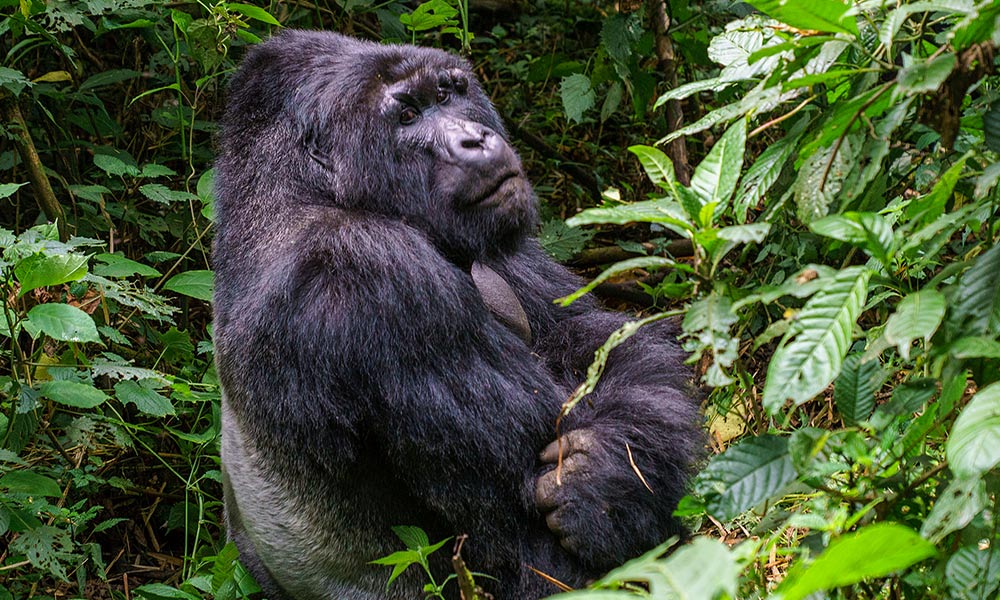Many people love the gorillas! There are two species of gorillas – the eastern gorilla and the western gorilla. Each of these is divided into two subspecies – eastern lowland and western lowland gorillas. The two species live in central Africa, separated by a vast swathe of rain forest.
Of all the gorilla species, it is a luxury to see the mountain gorillas. This is due to the fact that the mountain gorillas are only found in three countries in the world; Uganda, Rwanda and the Democratic Republic of Congo. Going on a mountain gorilla trek in the impenetrable jungles of Bwindi or the Virunga is one of the best wildlife experiences you can ever take in Africa.
- Gorillas share human DNA.
Gorillas are special primates sharing over 98% of their DNA with humans.
- Mountain gorillas are as shy though strong.
Locals living near Bwindi Impenetrable National Park know this for a fact! A mountain gorilla will never chase you when you are facing it and looking directly into its eyes. However, you should know that when threatened they can be aggressive. They beat their chests and let out angry grunts and roars, something they learn from an early stage. It is a responsibility of the makes to protect the individuals in the group. In serious times of “wars” group leaders often silver backs or black backs will charge at the threat and mothers will fight to the death to protect their young ones.
- Gorilla size
Amongst all the apes, the gorillas are the world’s largest. It is also the largest among primates in the world. They are closely related to humans, with 98% of their DNA identical to that of Homo sapiens.
- Intelligent apes
Gorillas are highly intelligent. They use tools and have various methods of communication, including some 25 different sounds. One famous captive-born individual, Koko, has been taught sign language since she was a year old. By the age of 40, she had a library of about 1,000 signs and could understand some 2,000 words of English.
- Feeding
Gorillas are mainly herbivores. They spend most of their day foraging for bamboo, fruit and leafy plants, though western lowlands also eat small insects. Adult gorillas can eat up to 30kg of food each day.
- Gorillas have nesting instincts
Gorillas build nests in which to sleep, both on the ground and in trees, made of leaves and branches. Counting abandoned nests is an effective way for scientists to estimate population size.
- Female productivity
Females usually produce just one baby every four to six years. In total, a female will only give birth three or four times. Such a low reproduction rate makes it difficult for populations to bounce back following a decline.
- Mountain gorillas live in groups of up to 30.
The largest gorilla group or family ever studied is in Rwanda and is led by Cants bee now 38 years old! A gorilla family is led by a silverback. These troops also include several younger males, adult and juvenile females, and infants.
- Aged male gorillas are called silverbacks.
This name originates from the silver stripe they develop on their backs when they mature. The silver hair can be compared to the grey hair that humans develop.
- The silverback gorillas ensure protection of the group.
In addition to providing protection to group members, silverbacks maintain order and decide all activities within their troop. They schedule feeding trips, resting time, and travel. They also father the majority of the young in the group.











